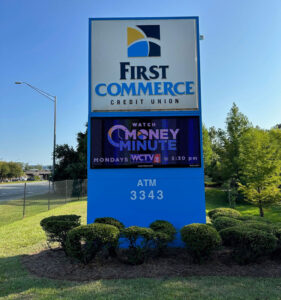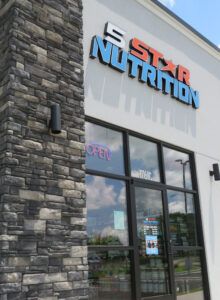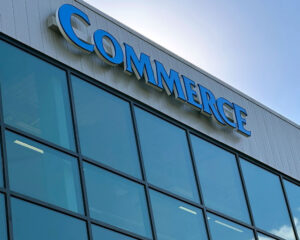
Thermoforming is a versatile manufacturing process widely employed in various industries, including packaging, automotive, aerospace, and signage. In this article, we will delve into the process of thermoforming and explore its applications and benefits in the sign industry.
Understanding Thermoforming
Thermoforming is a plastic fabrication technique that transforms thermoplastic materials into diverse shapes and forms. It involves several key steps:
- Heating: The process commences with the thermoplastic sheet being heated in an oven or through a heating element. This controlled heating softens the material, rendering it pliable and ready for shaping.
- Forming: The softened plastic sheet is then maneuvered over a mold, either by a vacuum or pressure system. Vacuum forming uses suction to draw the sheet tightly against the mold’s contours, while pressure forming employs air or mechanical force to press the material onto the mold. As the plastic conforms to the mold’s shape, it takes on the desired form.
- Cooling: After forming, the thermoforming machine employs a cooling system to rapidly cool and solidify the plastic into its final shape.
Applications in the Sign Industry
Thermoforming machines find extensive use in the sign industry, enabling the creation of a wide range of signage products with exceptional versatility and quality.
Dimensional Letters and Logos: Thermoforming can produce striking three-dimensional letters and logos that enhance signage and branding. These dimensional elements are often mounted on signs or buildings, providing a polished and professional appearance.
Thermoforming offers several advantages that make it a preferred choice in the sign industry:
Benefits of Thermoforming in the Sign Industry
Customization: Thermoforming allows for the creation of highly customized signage solutions. Designers can achieve intricate shapes, sizes, and designs to meet the unique needs of clients.

Durability: Thermoformed signs are durable and weather-resistant, making them suitable for both indoor and outdoor applications. They can withstand harsh environmental conditions, ensuring a long lifespan.
Cost-Effectiveness: Thermoforming is a cost-effective method for producing high-quality signage. It offers an efficient production process, reducing labor and material costs.
Versatility: A wide range of thermoplastic materials is available for thermoforming, including ABS, acrylic, and polycarbonate. This versatility allows sign manufacturers to choose the best material for their specific requirements.
Professional Appearance: Thermoformed signs have a polished and professional appearance. The process results in smooth, clean lines and consistent quality, enhancing the overall visual appeal of the signage.
In conclusion, thermoforming technology has become an indispensable tool in the sign industry, enabling the creation of visually appealing, durable, and customizable signage solutions. Its ability to combine functionality with aesthetics makes it a valuable asset in the world of signage. Whether you need dimensional letters, lighted signs, architectural signage, directional signs, or ADA-compliant signage, thermoforming offers a versatile and cost-effective means of bringing your designs to life.






